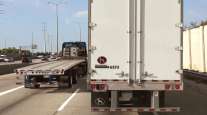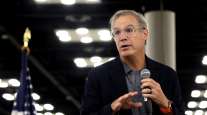Traffic Fatalities Rise 10.4% in First Half of 2016

Distressed by a 7.2% increase in traffic deaths in 2015, the biggest jump in 50 years, the National Highway Traffic Safety Administration began forming the Road to Zero Coalition to reverse that momentum.
NHTSA’s announcement on Oct. 5 that fatalities soared another 10.4% in the first six months of this year added even more urgency to the unveiling of the coalition that same day in Arlington, Virginia.
“We have an immediate crisis on our hands and a long-term challenge,” said NHTSA Administrator Mark Rosekind in announcing that his agency, the Federal Motor Carrier Safety Administration and the Federal Highway Administration are joining with the nonprofit National Safety Council to lead the coalition. “There are new, innovative solutions out there. We just have to work for them.”
Rosekind said the effort, which will be funded by $3 million from NHTSA over three years and $1 million from the National Safety Council, will be unprecedented in the breadth of the stakeholders involved.
While Rosekind said that half of the increase in traffic deaths in 2015 could be attributed to the rise in vehicle miles traveled thanks to lower fuel prices and an improving economy, he stressed that 94% of fatalities can still be blamed on human behaviors such as distracted driving, speeding and drug and alcohol use.
“New technologies [such as autonomous vehicles] have untold potential to save lives on our road, [but] the Road to Zero Coalition is being formed to take immediate action today and to build out a plan for the long term,” said Rosekind, who termed emerging technologies a tool but not an answer to the problem. “We will create a zero traffic death scenario that is feasible and achievable within 30 years. We know we can’t reach zero by doing more of the same.”
Noting that there’s a traffic death every 15 minutes, FHWA Deputy Administrator David Kim said the Road to Zero “is more than a slogan. It’s a mission.”
FMSCA Deputy Administrator Daphne Jefferson noted that while large trucks and buses represent only about 5% of registered vehicles and 10% of miles traveled, they are involved in 12% of the fatalities.
“That number’s way too high,” said Jefferson, adding that FMCSA is focused on raising entry standards into the truck and bus industries while also taking current “bad actors” off the roads.
National Safety Council CEO Debbie Hersman said that there once were major doubts that fatal commercial plane crashes in the United States could be avoided but that there hasn’t been one in more than seven years.
“One hundred [traffic] fatalities a day is the equivalent of two regional jets crashing every day,” Hersman said. “If we had 14 plane crashes a week, our hair would be on fire and no one would set foot on an airplane. Why do we accept the fatalities that occur on our roadways because they happen one or two or three or four at a time?”
Hersman added that if the U.S. traffic death rate was equivalent to those of 19 other high-income nations, about 20,000 lives – nearly 60% of those lost on the roads – could be saved.




